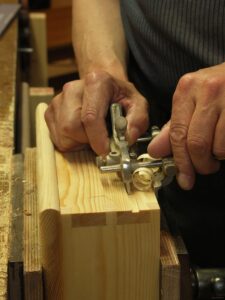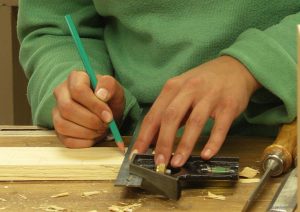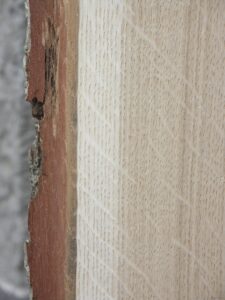Real Woodworking Campaign #1
Where do we begin?
Back in the post war 50s and 60s something began to emerge called Do It Yourself. In Britain, DIY shops popped up to compliment hardware stores and every town had a dozen or so to choose from. In some measure it was a new phenomenon and unskilled people started hanging Styrofoam tiles from their ceilings and draught proofing their windows and doors. DIY shops stocked products hitherto unknown and a plethora of unique new products emerged to provide do-it-yourselfers with what they thought would help them get the job done. There was something to doing it yourself really. A sense that people were taking responsibility for their property, engaging in its maintenance and such. More importantly, there was a sense of personal achievement mixing concrete and making your own stepping stones and that sort of thing. Over half a century later the DIY shops were taken over by DIY supermarkets like B&Q and Home Depot and unfortunately a one-stop-shop became the standard one-size-fits-all. That was a sad change because of course that then dictated what we all could buy and we were subjected to an IKEA mentality as to what we should build, hence MDF (Mediocrity Defined Furniture), OSB (Overpriced Straw Board) and other forms of so called Engineered Wood then dictated the limitations of what we could build. Colleges and Universities embraced the new materials and taught people like me that these products were the way forward. That was back in the 60s when the products were new.
What we didn’t know then was that they were really designed boards intended for mass markets and not for hand tools. We were compromised, frustrated and conned. Much of what we were taught shortly became obsolete and we were competing in garage workshops with big-boy makers that supplied finished pieces, all be it junk, for the same price we were buying the raw materials for. They could buy materials in bulk at a fraction of what we had to pay, which left us in a market place in which we couldn’t survive.
But, as with all entrepreneurs, customizing my work meant achieving levels of workmanship and designs mass makers couldn’t duplicate. I chose the solid wood route simply because I wanted to guarantee my work for decades and even centuries. That’s only possible with real wood, so the Real Woodworking Campaign is not so new to me and the Campaign must first hinge on working with real wood, which MDF and others are not.
Real Woodworking means working the substance of real wood and not boards purely engineered for machine economy. At the moment we should accept plywood for inclusion in the real aspect of the wood at this point, until I hear the thoughts of others. For instance, perhaps you feel this material cannot be worked well with more traditional hand tool methods and techniques. That could be a reason for exclusion. Give me your thoughts.







Great initiative Paul! One argument against using all solid woods is sustainability of supply. 100 years ago, furniture factories owned large wood lots, which is no longer the case. For this reason I think plywood should be included as Real Wood.
Jim B
I think that we can accept it for now until we get more feedback on how others might feel about it.
I think hardboard should be kept because it is relatively cheap, not everyone can afford to buy solid oak, it is easily cut, shaped with rasps and coping saws, and easily planed – making it ideal for smaller children to use.
I would say pretty much the same for plywood.
Keep up the good work.